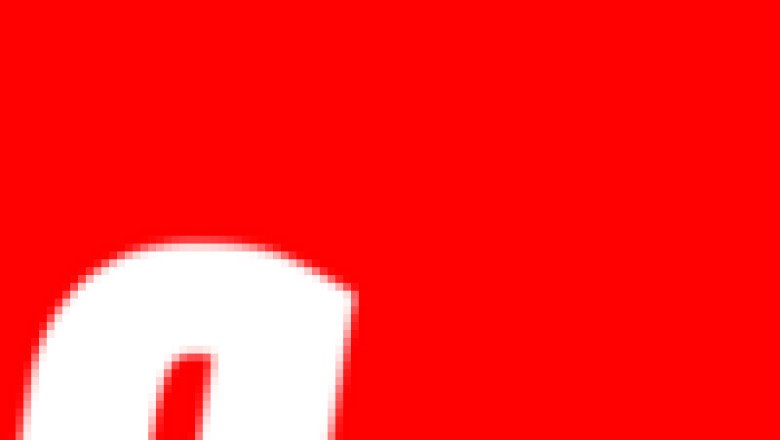
views
By Manish Rai
After lengthy negotiations in Doha, Hamas has named Yahya Sinwar as its new Political chief, replacing Ismail Haniyeh who was assassinated in Teheran. Since 2017, Sinwar has served as the group’s leader inside the Gaza strip. He now becomes overall leader of its political wing. Sinwar’s promotions undermines more pragmatic and senior figures in Hamas with wider exposure to the international political arena and geopolitical landscape of the region, such as former politburo head Khaled Meshaal. Following the death of Haniyeh, who had strong relations with Iranian officials, the most prominent name to be considered as his successor was Khaled Meshaal. The appointment of Sinwar came as a big surprise because many did not take into account the Iran factor. Initially, it was thought Khaled Meshaal would resume his role as chairman of the Hamas Political Bureau, an office he previously held between 1996 and 2017 prior to Haniyeh. But Iranians purportedly vetoed this and put all the weight behind Sinwar candidature.
Meshaal’s vocal criticism during the 2011 Arab Spring of Syrian President Bashar al-Assad, a close ally of Teheran made him a deeply unpopular figure among Iran’s top leadership. In addition to this Meshaal had made statements in the past opposing Hamas growing dependence on Tehran. Hamas is predominantly a Sunni Islamist organisation, while Iran is a hard-line Shiite regime, they found common ground only in their opposition to Israel. That’s why the alignment between Iran and Hamas has fluctuated in the past many times. Most importantly in 2012, differences over the Syrian civil war introduced a major rift in their relationship. Hamas tacit support for Sunni rebels in Syria was at odds with Iran’s allegiance to the Assad regime, leading to a temporary withdrawal of Iranian support. For years, ever since Jordan expelled the Hamas leadership from Jordanian capital Amman, in 1999, Hamas had maintained the headquarters of its external leadership in Damascus. But in January 2012, Hamas leader Khaled Meshaal abandoned the group’s Damascus base after airing the group’s views about the Syrian civil war. Although in June 2022, Hamas and Syria announced their decision to restore ties. But the Syrian regime and Iranians were always suspicious about Hamas’ moderate faction led by Khaled Meshaal.
On the other hand, Sinwar forged close relations with Iranians since becoming head of Hamas in Gaza in February 2017 taking over from Ismail Haniyeh, who became head of the political bureau. In the March 2021 elections, Sinwar was again elected head of Hamas in Gaza. His focus remained on strengthening military capabilities for Hamas’s armed wing Izz ad-Din al-Qassam Brigades. For that immense military aid was required. He formed an alliance with Qasem Soleimani, commander of the Quds Force in the Islamic Revolutionary Guard Corps (IRGC). Resulting in Iran providing a steady flow of weapons, funding, and military training, which undoubtedly facilitated the group’s military operations, including its recent attack on Israel. Importantly, Iran helped Hamas to design and produce rocket systems that match the capabilities and material available in Gaza in vast numbers. In return Sinwar chose to make his factions sort of an Iranian satellite revolving around its orbit. Sinwar saw himself as the Gaza Strip’s self-appointed emperor. He distanced his faction from the political leadership abroad, aligning more closely with Hamas’ local military command.
Yahya Sinwar and Mohammed Deif, Hamas top military commander in Gaza, reportedly do not follow directives from their politburo headquartered in Doha. Both have decided to go rogue and lead a faction within Hamas far from the political leadership and closer to Iran, where financial and military aid is more generous. For Iran, which always seeks influential and loyal proxies in the Middle East, Sinwar and Deif represented prime acquisitions. Iran found Hamas political leadership, which was also aligned with Turkey and Qatar, unreliable and not loyal enough. Tehran sought loyalists fully committed to the ayatollahs’ regime, controllable through financial and military aid.
The recent appointment of the new political chief was mainly the power play between Meshaal’s faction, which is closer to Sunni countries, and Sinwar’s faction, which is closer to the pro-Iranian axis. Ultimately, the internal struggle was resolved in favour of the latter. Hamas as a group always maintains a degree of political and strategic independence, primarily focusing on Palestinian interests. It is not an Iranian proxy, like-Hezbollah which takes direct orders from Tehran but rather an ally of convenience, with a shared common enemy in Israel. But with the rise of Sinwar as the overall chief, Hamas has chosen the way of Hezbollah to become a proxy group rather than an organisation committed to a cause.
Also published on Medium.
https://thearabianpost.com/hamas-has-chosen-to-be-an-iranian-satellite-like-hezbollah/

























Comments
0 comment